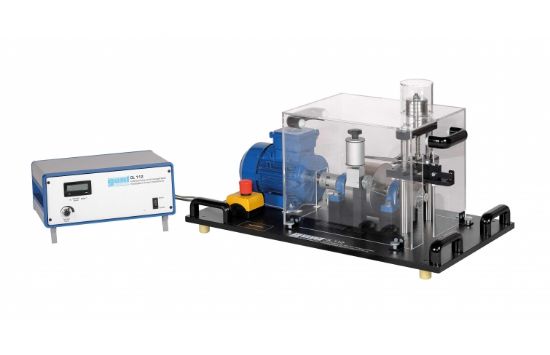Cam mechanisms play an important role in the conversion of rotary motion into oscillatory motion. The most common application of cam mechanisms is the activation of valves in engines. This application is highly dynamic: valves must be opened and closed in very quick succession. The contact between the valve and a cam must not be lost, otherwise it would result in uncontrolled oscillations, valve float and possible damage to the engine.
The GL 112 experimental unit allows the dynamic investigation of a cam mechanism at various speeds. Four typical cams with corresponding engaging members are compared in terms of their motion behaviour. The valve is simulated with a mass and a spring.
By varying the spring stiffness, spring preload and oscillating mass, it is possible to study the dynamic limits of the respective cams. The cam motions and valve raising can be clearly demonstrated using a stroboscope (not included).
A recorder synchronised with the cam member records the actual elevation curve of the cam mechanism. A speed-controlled drive motor with a large flywheel generates a speed as constant as possible. The open design means that the motion is clearly visible in every detail.
A transparent protective cover ensures safe operation. The experimental unit is intended for demonstration in engineering education. It is not suitable to be used as a test bench in the field of endurance testing/tribology.

